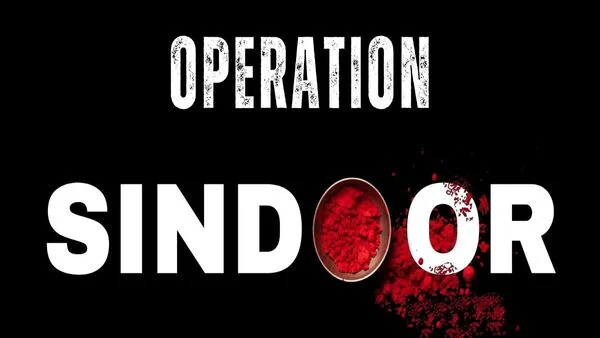
Operation Sindoor: India’s Response to Pahalgam Terror Attack
For CLAT 2026 Aspirants | Current Affairs | International Relations | National Security
Introduction
On April 22, 2025, a brutal terrorist attack occurred in Pahalgam, Jammu & Kashmir, orchestrated by Lashkar-e-Taiba (LeT), a Pakistan-based terror outfit operating through a proxy group named The Resistance Front (TRF). The attack led to the deaths of 26 civilians, including a foreign national from Nepal, marking it the deadliest civilian-targeted terror incident in India since the 26/11 Mumbai attacks.
In response, India launched Operation Sindoor on May 7, 2025, aimed at targeting terror infrastructure across the Line of Control (LoC). The operation was justified as measured, proportionate, and preventive, aligning with international counter-terror norms.
This case holds crucial importance in legal reasoning, international law, and national security modules under General Knowledge and Current Affairs for CLAT 2026 aspirants.
Point-Wise Summary
- The Attack (April 22, 2025)
- Location: Pahalgam, Jammu & Kashmir.
- Perpetrators: Lashkar-e-Taiba and its proxy, The Resistance Front (TRF).
- Casualties: 26 civilians killed, including a Nepalese citizen.
- Nature of attack: Victims executed at close range, many in front of family members to incite trauma.
- Strategic Motive Behind the Attack
- Destabilize the return of normalcy in J&K.
- Harm the booming tourism economy (23 million tourists in 2024).
- Incite communal discord in India.
- Create ground for further cross-border terrorism.
- Terrorist Group Involved: The Resistance Front (TRF)
- TRF is a front for Lashkar-e-Taiba, a UN-designated terror outfit.
- India had previously alerted the UN 1267 Sanctions Committee in 2023 and 2024 about TRF.
- Pakistan tried to suppress references to TRF in UN Security Council statements.
- India’s Investigation
- Found direct communication links between attackers and handlers in Pakistan.
- Attackers identified via eyewitnesses and forensic intelligence.
- Social media handles affiliated with LeT reposted TRF’s claims, confirming connection.
- Pakistan’s Role
- Continues to be a safe haven for terrorists.
- Known for misleading international bodies like the Financial Action Task Force (FATF).
- Case of Sajid Mir, a 26/11 accused who was falsely declared dead by Pakistan, cited as proof.
- India’s Diplomatic & Military Response
- On April 23, 2025, initial diplomatic measures were taken.
- After two weeks with no Pakistani action, India launched a military strike — Operation Sindoor.
- Aim: Deter future attacks, pre-empt active terror modules, and destroy infrastructure.
- Operation Sindoor (May 7, 2025)
- Described as measured, proportionate, and non-escalatory.
- Targets were terrorist launchpads and infrastructure across LoC.
- Operation was consistent with international law and the UN Security Council’s April 25 Statement, calling for accountability.
- UN Response
- UNSC Press Statement condemned the attack and emphasized punishing perpetrators.
- India’s operation aligned with the UN call to action.
- Indian Leadership & Briefing
- Statement delivered by Foreign Secretary Shri Vikram Misri.
- Military briefings followed by Colonel Sofia Qureshi and Wing Commander Vyomika Singh.
- Public and National Sentiment
- Widespread outrage and grief across India.
- Strong support for the armed response.
Why in News?
- The Pahalgam terror attack is the biggest strike on Indian civilians in over a decade.
- India’s military response (Operation Sindoor) reflects a calibrated counter-terrorism doctrine.
- Highlights India’s diplomatic engagement with UN mechanisms and exposes Pakistan’s duplicity.
- Significant development in India-Pakistan relations, border security policies, and counter-terror jurisprudence.
Key Notes & Explanations of Terms
Term | Explanation |
Lashkar-e-Taiba (LeT) | Pakistan-based terrorist group proscribed by the UN. Responsible for 26/11 Mumbai attacks. |
The Resistance Front (TRF) | Proxy group for LeT, used to mask direct Pakistani involvement. |
1267 Sanctions Committee | UN Security Council committee that oversees sanctions against terror groups and individuals. |
FATF (Financial Action Task Force) | Global watchdog against money laundering and terror financing. |
Sajid Mir Case | 26/11 plotter falsely declared dead by Pakistan, later found alive and arrested under pressure. |
Measured Response | A term in international law and military strategy meaning proportionate and controlled retaliation. |
Operation Sindoor | Codename for India’s precision military strikes post Pahalgam attack, targeting terror camps. |
LoC (Line of Control) | The de facto border between India and Pakistan in the J&K region. |
Pre-emptive Strike | A military attack initiated to prevent an imminent attack by the adversary. |
UNSC Press Statement (April 25) | A Security Council statement that condemned the Pahalgam attack and urged action. |
Relevance for CLAT 2026 Aspirants
This issue can be used for:
- Reading Comprehension Passages on terrorism, national security, or diplomacy.
- Legal Reasoning Questions on proportionality in self-defense and international law.
- General Knowledge Questions on counter-terror strategies, India-Pakistan relations, or international forums.
- Essay Topics such as “India’s Counter-Terrorism Policy”, “The Role of UN in South Asian Conflicts”, or “Is Pre-emptive Strike a Violation of Sovereignty?”
Keywords for SEO and Blog Integration
Keywords: best online coaching for CLAT, online coaching for CLAT, Best CLAT Coaching in Patna, Best CLAT Classes In Patna, India Pakistan relations, Operation Sindoor, Pahalgam attack, UN Sanctions Committee, Counter Terrorism India
Conclusion
The Pahalgam attack and India’s response via Operation Sindoor exemplify India’s evolving strategic doctrine—combining diplomatic engagement, intelligence-based targeting, and global legal norms. For a CLAT aspirant, understanding this development is crucial in connecting law with global politics, and it reinforces the importance of being aware of real-world applications of international law, national security policy, and institutional responses.
This event is a stark reminder of the challenges India faces on its borders and the resolve with which it must act—legally, responsibly, and decisively.
Note
- This Blog is Powered by CLAT Gurukul — India’s Leading Law Entrance Prep Platform
At CLAT Gurukul, we believe in empowering future legal minds with the right blend of knowledge, strategy, and mentorship. This blog is a reflection of our commitment to quality content that not only helps aspirants stay updated but also sharpens their conceptual clarity.
Why CLAT Gurukul?
- Personalized Mentorship by Top Legal Educators
- Comprehensive Study Materials & Legal Updates
- Daily Practice Sets, Mocks & Performance Tracking
- Result-Oriented Strategy for CLAT, AILET, and CUET
Whether you’re reading this article to deepen your understanding or to stay ahead in your exam prep — you’re already one step closer with CLAT Gurukul by your side.
Join thousands of successful aspirants who trusted CLAT Gurukul and cracked India’s top law entrance exams.
Visit www.clatgurukul.in to learn more or speak to our experts now!
- Note from CLAT Gurukul
At CLAT Gurukul, we are committed to providing free CLAT study material, including CLAT current affairs, legal reasoning practice sets, general knowledge updates, logical reasoning questions, English comprehension exercises, and more — all curated by top mentors.
Our blog section is regularly updated with high-quality CLAT content tailored to match the evolving pattern of the CLAT UG exam. Whether you’re looking for CLAT 2026 current affairs, CLAT legal reasoning passages, or mock practice sets, we have you covered.
We believe in open-access learning and will continue to publish free CLAT preparation resources to help serious aspirants succeed.
Explore more free content under categories like:
Best online coaching for CLAT, CLAT current affairs, CLAT GK updates, CLAT legal updates, CLAT logical reasoning, and CLAT English preparation.
For structured learning, daily mocks, and expert mentorship, visit www.clatgurukul.in — the Best CLAT Coaching in Patna and India’s most trusted platform for CLAT online coaching.
- For CLAT Legal Reasoning Blog Posts:
At CLAT Gurukul, we publish expert-level CLAT legal reasoning practice questions, case law-based passages, and constitutional law concepts to sharpen your application skills. These blog posts are updated regularly with CLAT-level legal questions, explanations, and strategies to help you master legal reasoning for CLAT 2026.
We ensure that all our content aligns with the official CLAT syllabus and includes current legal developments, landmark judgments, and statute-based questions.
Explore more under categories like:
CLAT legal updates, CLAT case-based passages, free CLAT legal reasoning PDFs, and Best online coaching for CLAT.
For full courses, live mentoring, and exclusive mocks, visit www.clatgurukul.in — the Best CLAT Classes in Patna and India’s leader in CLAT online coaching.
- For CLAT Current Affairs & GK Blog Posts:
Stay updated with our regularly posted CLAT current affairs and CLAT GK capsules — covering national, international, legal, and economic news relevant for the CLAT 2026 exam.
Our current affairs blogs include monthly compilations, legal news analysis, and static GK notes, curated by subject experts for CLAT GK preparation.
Find more in categories like:
CLAT current affairs 2025–26, legal GK for CLAT, important constitutional amendments, free CLAT GK PDF, and more.
Join the ranks of toppers who trust www.clatgurukul.in — the best online coaching for CLAT and the top-rated CLAT coaching in Patna.
- For CLAT Logical Reasoning Blog Posts:
Our CLAT logical reasoning practice sets are designed to boost your critical thinking and comprehension accuracy. We post argument-based questions, assumption-inference practice sets, and CLAT pattern logical reasoning exercises to help you score high in the reasoning section.
Visit blog categories like:
CLAT logical reasoning, statement-assumption questions, CR drills for CLAT, and free reasoning resources for CLAT aspirants.
For daily practice, mentorship, and test strategy, visit www.clatgurukul.in — the Best CLAT Online Coaching platform.
he Best CLAT Online Coaching platform.






